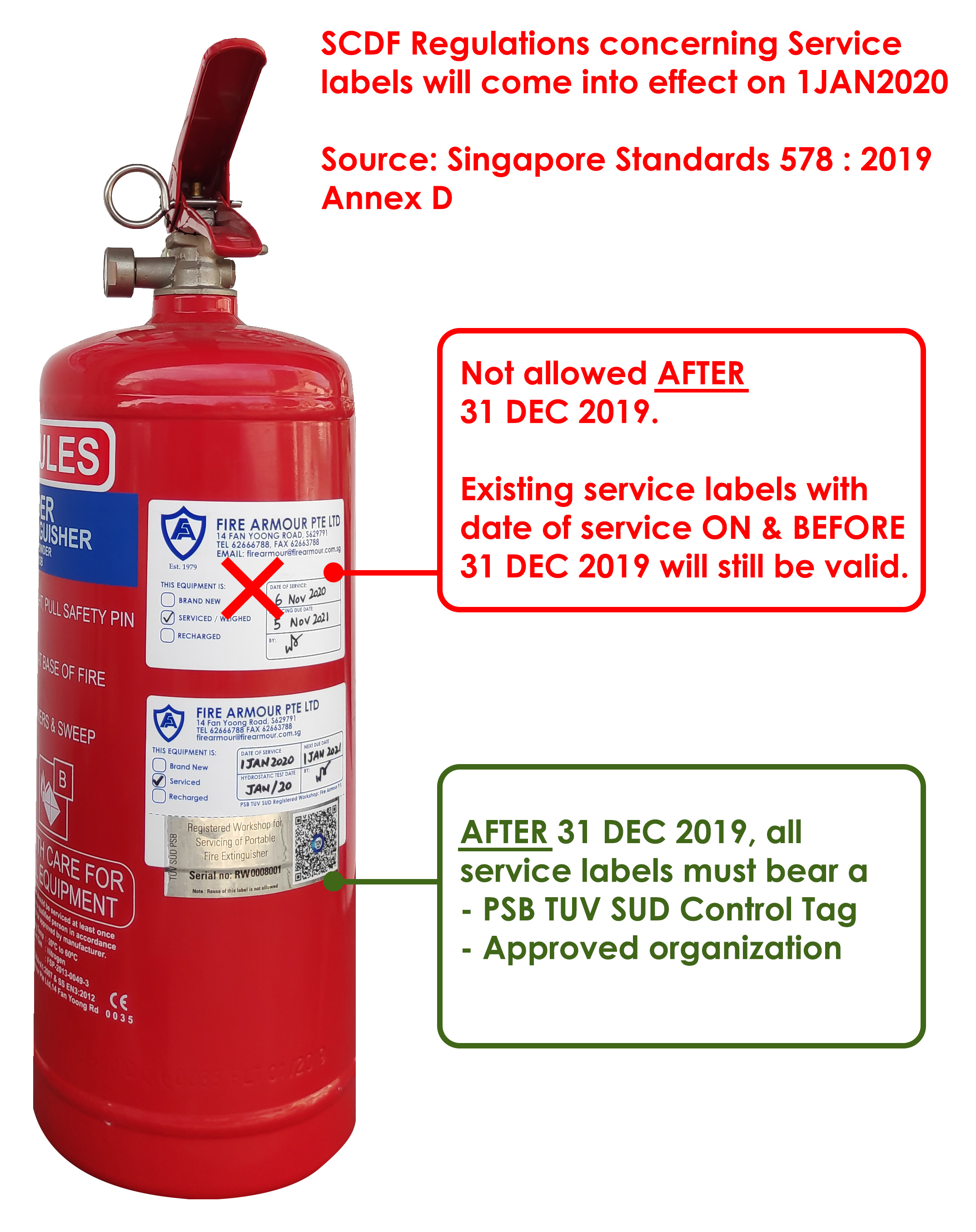Singapore Standard 578: Use and Maintenance of portable fire extinguishers
Singapore standard 578 or SS 578 for short governs the use and maintenance of portable fire extinguishers.
Before you continue reading
This is a very summarised version of the standard that is not word for word and many parts have been omitted. We are not be responsible for any miscommunication and misunderstanding resulting from reading this page. The wording has been greatly simplified to make it easier for the layman to understand and to avoid copyright issues. This page is meant to educate new staff who will be responsible for fire fighting equipment within their own premises.
Fire Extinguisher Placement
Not sure how many fire extinguishers you need? Click here.
Control Tag News
Effective as of 14 February 2020, all new fire extinguishers sold directly from the manufacturer are not required to bear the control tags
A copy of this letter can be downloaded here.
Summary of changes since 14 Feb 2020:
| Control Tag Required? | Servicing Label Required? |
|
|---|---|---|
| New Fire Extinguishers from Manufacturer | NO | YES |
| Servicing of Fire Extinguishers after 01 Jan 2020 | YES | YES |
| Hydrostatic testing after 01 JAN 2020 | YES | YES |
| Recharging after 01 JAN 2020 | YES | YES |
Implementation of fire extinguisher service labels with control tags.
Effective as of 1 JAN 2020, all fire extinguisher’s must have a control tag attached to the service label.
Fire Armour SCDF Singapore Standard 578 Implementation Letter : Download here

These are the owner’s responsibility:
1. Extinguishers have to be serviced once a year by a competent technician of a workshop approved by the Authority.
Source: SS 578: 2019 10.1.4
If you need your extinguishers to be maintained, do contact us for a free quotation with no obligations.
2. Extinguishers have to be inspected by owner at least once a month
Source: SS 578: 2019 10.2.1
3. The owner has to inspect for the following:
(a) Is the extinguisher at the designated place
(b) Is the extinguishers unobstructed and visible
(c) Are the operating instructions visible and facing outward
(d) Safety pin and safety seal are present
(e) Weigh or heft the extinguisher to determine fullness
(f) Examine for obvious physical damage, corrosion, leakage or clogged nozzle
(g) The pressure gauge is in operation range
Source: SS 578: 2019 10.2.1
Useful information to be aware of
1. Extinguisher placement for Class A hazard
The maximum distance a person has to travel to reach an extinguisher should not be more than 15m for Class A hazard
Source: SS 578: 2019 9.2.1
2. For Class A low hazard occupancy, the minimum rating shall be 13A
Source: SS 578: 2019 9.2.2
3. Hydrostatic testing has to be performed once every 10 years for gas type extinguishers (Carbon Dioxide & Clean agent) and every 5 years for non-gas type extinguishers (Powder, water, foam).
Source: SS 578: 2019 11.3.1
